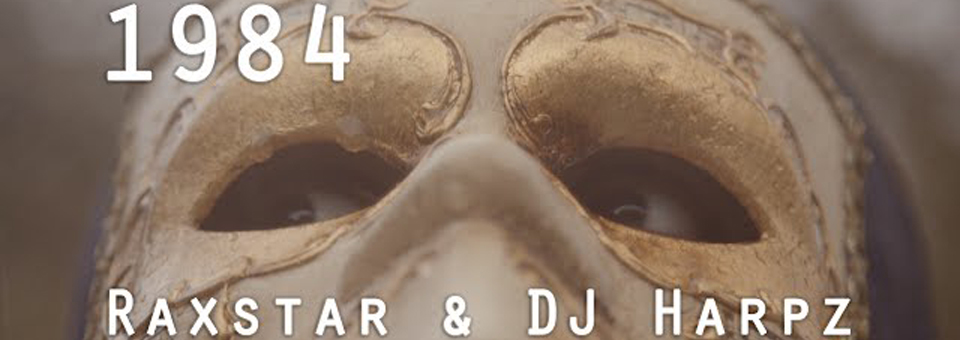The past week marked 30 years since the start of the Sikh Genocide which originated in Delhi. One of the key conclusions many Sikh thinkers have made, including my fellow writer here Ranveer Singh, is that in order to destroy State propaganda, we must create our own narrative. Film is not the only medium for story-telling, but globalisation through outlets such as YouTube has allowed us to share emotively to the world like never before. Film educated me, and I’m confident it can do the same for others.
In my late teens, I did a lot of soul searching. It was a chaotic time, but also marked my start in living the Sikh way of life. A pivotal moment came in the form of a documentary created by the Discovery Channel titled ‘The Storming of the Temple’. As it was my first insight into what took place in 1984, I was shocked at how I was learning about something so recent and incredibly traumatic from a western media outlet. I didn’t have any idea how to check its accuracy as it appeared to be the only such documentary that I knew of, so I began exploring the history with the help of my dad. This disappointment and frustration led me to start creating my own narrative, and it all began with our entry into SikhNet’s Film Festival in 2009. My best friend, Jamie Stern-Weiner and I didn’t have a clue what we were doing but we were determined to give it a good go, knowing that we were only going to get better the more we practiced. The first scene we ever shot was a fight scene, shot from one angle and in one take. Everything went wrong, but we learnt the very basics of film by doing it. The camera we shot on wasn’t even digital, it filmed on tapes – so when I hear members of our community tell me they need to go to film school, or they tell me they’re saving their money to buy the equipment that they need, I cringe. We now all have access to a HD video camera, whether it’s a friend’s SLR or a smart phone. It can be tricky, but if you’re determined to create, you’ll find a way to contribute to the narrative that we desperately need.
I’m not the only one who made the same conclusions about our narrative. Along the way, I’ve made some dear friends who are also determined to see qualitative Sikh stories told. This week we released a music video for ‘1984’ by Raxstar & DJ Harpz, a song on the latest Immortal Productions album (spoiler alert coming up!) The concept of the video was to personify the Indian Government’s oppression and the Sikh struggle into two characters to depict the last 60 years, both artistically and poetically. The painting at the beginning represents a time of culture and art, destroyed by the 1947 partition and the 1966 re-mapping of Punjab. The hit with the bat is the final blow of systematic destruction and signals the beginning of the Genocide’s physical violence. The torturing that follows represents the decade of police extermination through Operation Woodrose in the 1980s and early 1990s. The burning of the art piece, represents the burning of the Sikh Reference Library after it was looted by the Indian Army. The ripping of Gunisha Kaur’s ‘Lost in History’ represents the destruction of Sikh intelligentsia whilst the feeding of bugs/insects is a metaphor for the substituted propaganda we have been fed. The bit of the video that has triggered the most debate? “Hey narvz, what does the ending mean mean?!” Like the entire video, and like all art, it’s open to interpretation. For me, the bystander who helped free the Sikh struggle never existed, hence why he disappears in the video twice. Far too many of us are waiting for someone to grant us what we want, whether its justice or freedom. The reality is, they’ll never come. We are what we’ve been waiting for and we must find our answers, ourselves. This problem is documented well in ‘Waiting for Superman‘ and can be found on Netflix. At the time of writing this, the video has amassed over 75,000 views across both Facebook and Youtube within just 4 days. We’ve received amazing feedback, particularly from non-Sikhs, telling us how it inspired them to go read about 1984 and the Sikh Genocide, how they are shocked they had never heard of it. It’s relieving to see how things are now different from when I first encountered this history.
Our dreams of having a fully representative and accurate Sikh narrative is just moments away. Last week, I was given an acting role in a film currently being filmed called ‘The Black Prince’. It tells the story of Duleep Singh and how the Sikh Raj is picked apart for the benefit of the British. What amazed me most about this was the quality of the production. I’ve been on a fair few professional film sets and this one stacked up well. The crew is made up of people from all over the world, some from Hollywood, some from Bollywood, all working towards the one goal of telling the Sikh story of sovereignty to the masses. What’s even more amazing is to know that the director, the main lead, the producer and many of the cast are Sikh. There’s no mockery of Sikhs and it’s the first time we haven’t destroyed the art with the clichéd melodrama seen in popular films like Sadda Haq, Shera Di Kaum, 1984 Punjab and Yodha. I’m really excited about this project as its the first film in a long while which Sikhs are producing which is both honest and professional.
Globally, the wheels of truth are in motion. It’s only a matter of time before Sikhs and non-Sikhs understand the Sikh struggle of the last 150+ years. 1984 is only part of the story, and is the most obvious and well-documented year of Sikh oppression by the Indian Government. If you went to see the Sikh narrative enhanced, let’s begin to stretch ourselves further and tell the full picture. I’ve never attended a single film class or gone to film school; everything I know is from practice and pushing myself. We all have a story which must be told in order to have full representation. Where once we were forced to shoot with guns, now we’re shooting with cameras. Strap up and join us as we shoot for justice.





